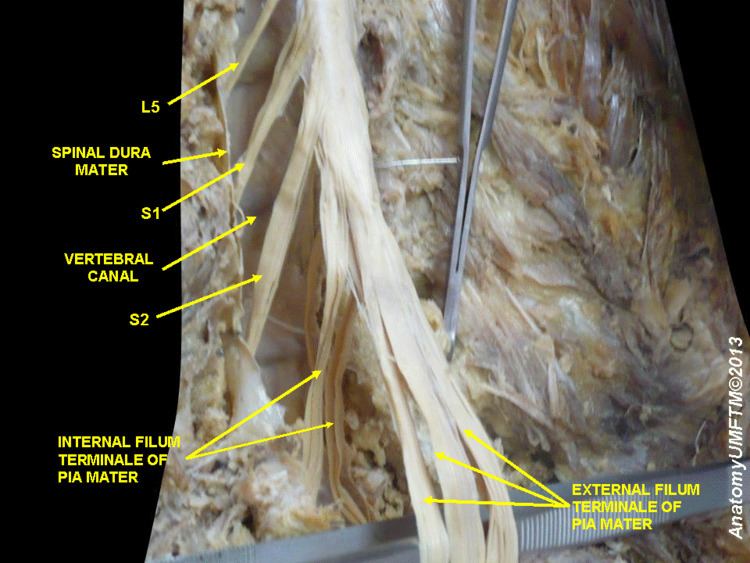Latin filum terminale TA A14.1.01.401 | Dorlands/Elsevier f_07/12364942 FMA 83977 | |
 | ||
The filum terminale ("terminal thread"), is a delicate strand of fibrous tissue, about 20 cm in length, proceeding downward from the apex of the conus medullaris. It is one of the modifications of pia mater. It gives longitudinal support to the spinal cord and consists of two parts:
The most inferior of the spinal nerves, the coccygeal nerve leaves the spinal cord at the level of the conus medullaris, superior to the filum terminale. However, adhering to the outer surface of the filum terminale are a few strands of nerve fibres which probably represent rudimentary second and third coccygeal nerves. Furthermore, the central canal of the spinal cord extends 5 to 6 cm beyond the conus medullaris, downward into the filum terminale.
References
Filum terminale Wikipedia(Text) CC BY-SA
